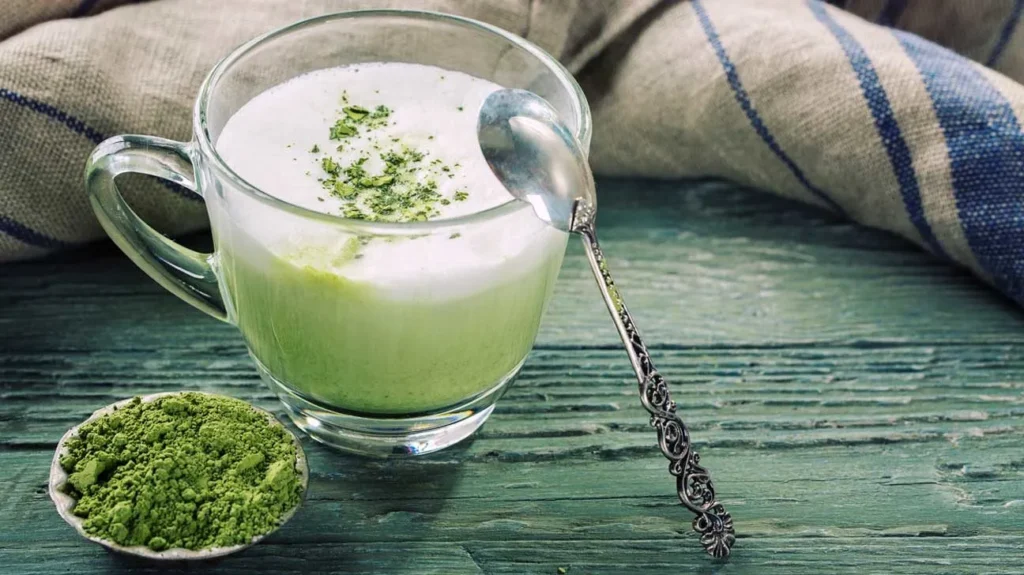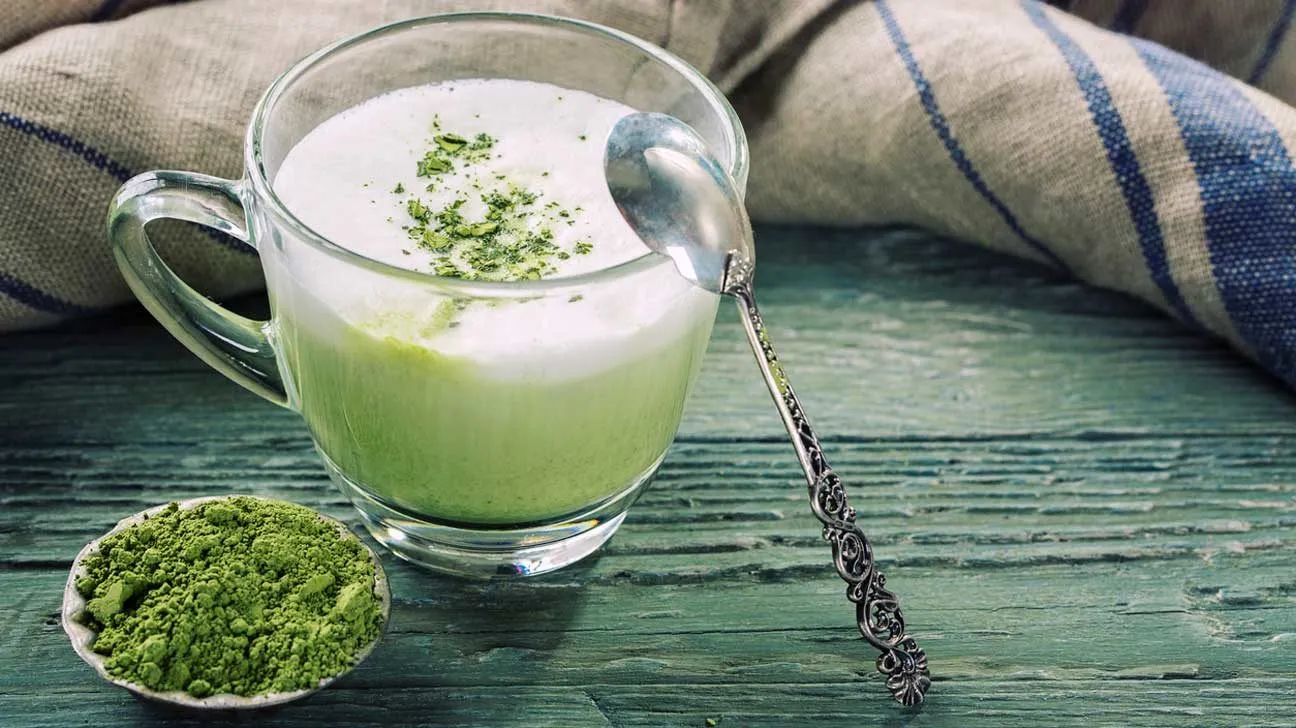In recent years, this ancestral tea of Japanese origin has become so popular in the West that it is very easy to find it in any coffee shop in the city. Known for its antioxidant benefits, matcha tea boosts metabolism while fueling your body with energy. Discover all its properties and some proposals to consume it.
Matcha tea is an excellent source of vitamins and minerals that are very beneficial for the body, free of toxins and without calories. It is the only green tea that is not consumed by infusion, but in powder form. This means that all its antioxidant properties are enhanced and concentrated, in addition to offering great versatility when adding it to our daily recipes.

What is matcha tea?
Long before the benefits of matcha tea reached our table, in 1191 Buddhist monks were already using the benefits of this ancient drink to improve their state of concentration in meditation rituals. Although we know matcha from its Japanese heritage, its true origin is Chinese, specifically from the Song dynasty.
This ancient infusion has become one of the fashionable drinks due to the multiple properties attributed to it to take care of the body. So much so that today it is easy for us to find it in any supermarket, as well as in the many specialized stores that offer a wide variety of types of matcha.
Before discovering its benefits and how to prepare this drink, it is important to know its production process. Matcha tea is obtained from the leaves of Camellia sinensis, or the Chinese tea plant, a natural source of antioxidants with a high chlorophyll content, which gives it its characteristic green color. The leaves are allowed to dry and later they are crushed with a mill until obtaining a fine powder that is ready for consumption.
Despite being part of the green tea family, its properties are unique: unlike normal tea consumption, where the dried leaves are immersed in hot water and only their diluted benefits are used, with matcha tea we consume all its properties. Directly by its powder format. Or what is the same: we do not lose any of its benefits.
Here we have prepared a list with the 5 most outstanding benefits and properties of matcha tea, as well as some proposals to introduce it into your daily diet.
Matcha tea properties
Beyond its popularization in the West in recent years, there are many scientific studies that support the multiple properties of consuming matcha green tea. Here we tell you some of the most outstanding:
1. Perfect balance of minerals and caffeine
Vitamins A, B1 and B2, C, E… matcha tea is a source of natural minerals which, thanks to its balanced content of vitamins and caffeine, is ideal for activating the body without harming lifestyles with strong stress or anxiety. A cup of matcha tea provides us with more caffeine than any other tea, but less than that of a cup of coffee. A perfect balance that provides the right amount of caffeine recommended for daily consumption.
2. Activate the metabolism
Matcha tea favors thermogenesis and therefore speeds up metabolism. This is thanks to its GCCE content, a compound associated with green tea, which can help speed up metabolism by up to 40% and regulate blood sugar levels. Matcha green tea is credited with properties capable of regulating what is considered “bad cholesterol” (LDL), and therefore, reducing the risk of cardiovascular diseases.
3. Natural source of antioxidants
Matcha green tea tops the list of antioxidant-rich super foods, due to its shade-grown method, maintaining the maximum chlorophyll levels of the Chinese tea leaves. Chlorophyll, added to its high catching content, make matcha tea a powerful detoxifying agent that helps eliminate heavy metals as well as other substances that are harmful to the body.
4. High natural fiber content
The direct consumption of ground green tea leaves in powder form allows matcha to maintain a high fiber content, to which numerous properties are attributed, such as improving constipation, balancing blood glucose or maintaining a potential satiating property.
5. It is a natural food coloring
Many of the dyes that we find on the market are loaded with chemicals that give food an artificial and synthetic color. However, matcha green tea, due to its high chlorophyll content, provides a natural green color that, thanks to its versatility, we can include in our day-to-day recipes, adding a bit of originality.
Matcha Tea Benefits
As we already know, matcha tea provides multiple properties to the body. Discover below what are the most outstanding benefits of consuming this type of green tea.
1. Natural source of energy
As we have verified, matcha green tea contains a cocktail of natural vitamins and minerals that will give you enough energy to overcome all the purposes of your day. Its fair caffeine content helps combat physical and mental exhaustion, without harming people subjected to high levels of stress or pressure.
2. Natural fat burning
Known for promoting thermogenesis, matcha tea speeds up metabolism, a fundamental requirement for burning fat naturally. It helps to control the line and its consumption is recommended for weight loss due to its ability to reduce the accumulation of liquids, because it stimulates proper kidney function.
3. Strengthens the immune system
Its high content of catechism, a type of phenolic compound that has a strong antibiotic and antibacterial capacity, has been shown to stop oxidative stress in cells. According to one estimate, its antioxidant power also combats the premature aging process and helps reduce the risk of various chronic diseases.
4. Improves digestion
Thanks to its high fiber content, matcha tea is able to soften the mucous membranes of the digestive system and therefore improve intestinal transit. For this reason, it is a very effective natural remedy for those who suffer from heavy digestion problems or discomfort of inflammatory origin in the stomach or intestine.
5. Protects from the sun and UVA radiation
Scientific studies [1] confirm that matcha green tea stimulates photo immunology and angiogenesis. In other words: it helps us combat the damage caused by ultraviolet rays. The antioxidant EGCG protects the skin and, added to the presence of beta-carotene in matcha, will help us achieve the best tan.
How to prepare matcha tea
Matcha tea is not just any infusion. Unlike the typical tea bags we are used to, with matcha we will get a cup of mousse loaded with antioxidants, vitamins and full of flavor.
There are two ways to prepare our matcha tea: the traditional and the modern style. In the original Japanese Chaney ceremony, matcha tea was prepared as follows:
- They placed the matcha in a large container called a chawing to which they added boiling water.
- They emulsified with a bamboo brush called a chosen until they obtained a homogeneous mixture in which a layer of foam formed on its surface.
This Japanese tea ritual is an ancient ceremony and highly respected by its citizens. Obviously, we are talking about the traditional style. We can make life easier for ourselves and carry out a more modern form of preparation.
- To prepare our matcha tea, we simply have to vigorously mix a teaspoon of coffee (1.5 gr) of our matcha powder with about 70 ml of hot water.
- We can use a blender or kitchen robot to prepare milkshakes, smoothies or natural juices.
Recipes with matcha tea
The versatility of matcha powder allows us to incorporate it into our daily diet, from savory dishes to the countless pastry recipes it offers us. Below we leave you one of the best recipes for you to enjoy matcha green tea to your liking, at breakfast, lunch, dinner… You choose!
Savory or sweet matcha tea crepes
To get started, you need the following ingredients:
- 1 egg
- 1 teaspoon (2g) of your favorite powdered matcha tea
- 100g of flour
- 300 ml of milk (semi-skimmed or vegetable, to your liking)
- 20 g butter
- 20g sugar
- Optional: a few drops of rum
Next, we show you step by step how to prepare the crepes:
- In a container, integrate the flour, the tablespoon of matcha and the sugar.
- In a separate container, beat the egg and add the milk and previously melted
- Integrate both containers and mix everything until you get a homogeneous mass. If desired, add the rum drops at this step.
- Prepare the pan with a few drops of oil or a little butter to prevent the dough from sticking to you.
- Pour a part of the dough in the center of the pan and form the crêpe with circular movements. When you get consistency, turn it over carefully with the help of a straight spatula.
- Once the crepes are cooked, fill them with your favorite ingredients. For salty you can add cheese, sausages, lamb’s lettuce, avocado, etc. If you find yourself in those days when sweets can’t resist you, try chocolate, hazelnut cream, fruit jam… Decorate with your most original toppings and enjoy!
More recipes with matcha tea
Are you looking for more recipes to include matcha tea in your daily diet? The powder format of this type of green tea offers us many options when incorporating it into our meals. Here we leave you some of our original recipes so that you can consume matcha tea in the best way:
- Matcha tea macaroons
- French Matcha Tea Muffins
- matcha tea cookies
- Matcha Green Tea Ice Cream
- matcha tea cake
How to drink matcha tea
Although matcha tea is generally considered very beneficial for the body, it is important to know what the recommended daily amount is for its consumption. We must not forget that, although to a lesser extent than other teas, matcha green tea also contains caffeine. Therefore, consuming more than the recommended daily amount can cause side effects such as insomnia, nervousness, rapid heart rate, headache, malaise, or even diarrhea.
Restrictions on the consumption of matcha tea
The maximum recommended dose of matcha green tea for an adult human is around three and a half liters of matcha tea per day [2]. Taking into account that 0.7 ml of water is needed to prepare our tea, this total amount would be equivalent to five individual servings of matcha tea. That is, we should not exceed four cups of matcha a day.
If you take an amount equal to or greater than the daily maximum recommended by experts, and you start to feel nauseated, headache or anxious, you should see your GP immediately.
Contraindications of matcha tea
In addition to the recommended daily amount, there are also a number of contraindications when drinking matcha green tea. Next, we show you a list with the main restrictions on its consumption for certain users.
- Due to its caffeine content, it is recommended that pregnant or lactating women, as well as children, should avoid its consumption.
- Those who should moderate their consumption are people who suffer from some type of nervous disorder, anxiety, sleep disorder or heart problems, since excessive tea consumption can aggravate their situation.
- Finally, if you have any type of doubt related to the consumption of matcha green tea and health, it is best to consult your doctor first.




